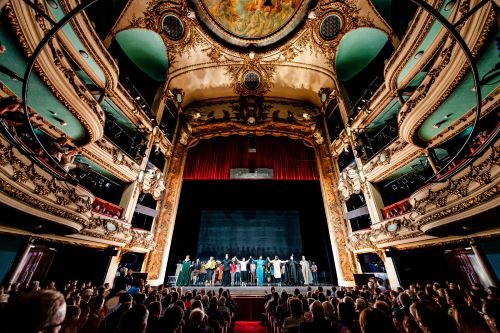
During the COVID-19 pandemic, the Metropolitan Opera initiated a study to learn what it would take to safely return to in-person performances. That study, co-authored by Howard Stone, Donald R. Dixon ’69 and Elizabeth W. Dixon Professor, postdoctoral researcher Philippe Bourrianne and graduate student Paul Kaneelil, uses fluid dynamics to visualize the airflows of performers to understand how far aerosols travel.
As reported by Calli McMurray in Smithsonian Magazine:
"The Met Orchestra initiated the study to learn what it would take to safely return to in-person performances. The results, published in August in Physical Review Applied, reveal musical professionals have such fine control over their breath that they emit weaker airflows during singing and playing than they and others do while speaking and breathing."
The research also corrects some previous assumptions about disease transmission:
"In the past, airborne disease transmission was incorrectly blamed on the larger droplets produced by coughing and sneezing, rather than the aerosols traveling with the air. Stopping transmission was thought to be as simple as washing your hands and disinfecting surfaces to get rid of lingering droplets. But superspreader events at the start of the Covid-19 pandemic, particularly among choirs who stood close together and likely had less breath control, showed otherwise, Bourrianne says. To stop airborne spread, you need to focus on where the air goes."
Read the full article in Smithsonian Magazine.